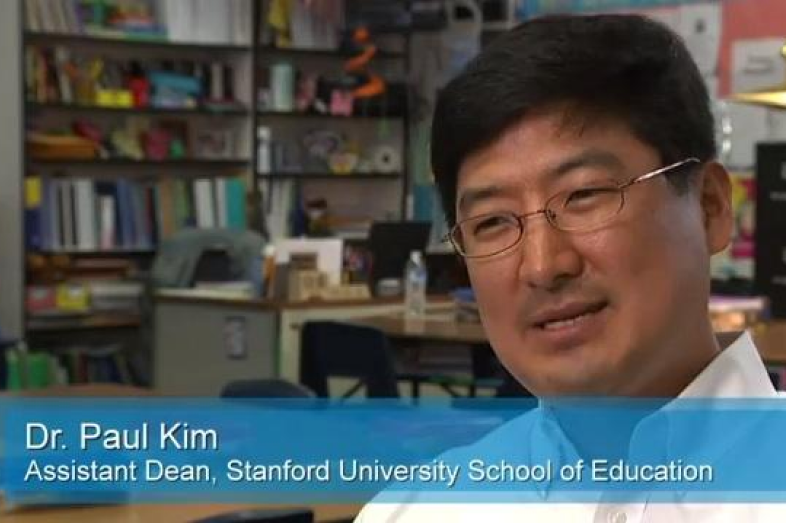

Do good questions lead to better answers? A software project that has been rolled out in 22 countries by an education professor from Stanford makes the case that students learn better by asking and responding to each other’s inquiries.
Stanford Mobile Inquiry-based Learning Environment (SMILE) relies on an internet connection and several mobile devices to create a network that an entire classroom can use. The system can also come with a wireless router that is battery operated—enough to support sixty tablets or smartphones. (SMILE partnered with Marvell Semiconductors, the maker of the battery operated device). Schools in rural settings with limited electricity or broadband can suddenly become high-tech, as well.
But while technology to many has been the oversold silver bullet of the education world, the scholar behind SMILE views his project as a means to a pedagogical end.
“I like students to be making questions. I want them to do all the hard work, the investigation,” said Paul Kim, as assistant dean at Stanford University’s School of Education. Part connectivity cheerleader, part traditional educator, in public appearances and in email exchanges, you can catch him saying bon mots like “SMILE is pedagogy” or “connectivity has become a new human right of the 21st century.”
Equipped with a network and hardware, teachers can have their students embark on a survival of the fittest mode of learning through inquiry. After a lesson is completed, students gather in pairs or teams to generate questions and accompanying answers in multiple choice format. The items are then displayed on a projection screen (or a head teacher’s mobile device, depending on the relative wealth of the school). Students rate each other based on a specific set of standards: does the question require analysis, does it lead to conversation, is it written clearly and free of spelling errors, are there factual errors in the question. In scores of field tests, Kim has seen students buy into the rubric’s terms with cut-throat zeal; on a scale of one to five, most questions are rated on the lower end. Many teachers incorporate SMILE into their curriculum two to three times a week.
SMILE is already being used in a wide range of educational settings around the globe. Districts on Native American reservations in Arizona and Alaska use SMILE. Villages in Tanzania are plugged in, and so is a medical school in Argentina. During a presentation of SMILE at a recent symposium on mobile learning in Washington, D.C, Kim described a student in Mexico who asked his peers through SMILE the name of the person celebrated in London, 1851. The question broke several rules: it had spelling errors, it permitted more than one answer, but most importantly, it was based on incorrect information. During a recent lesson, the class learned about London’s Great Exhibition, a world fair in 1851, and one of the two people who helped set it up—Prince Albert, Queen Victoria’s husband. The student’s question revealed he lacked a basic understanding of what the teacher taught the class. He thought Prince Albert (his stated answer) was honored with a festival. After asking the student to explain how he arrived at his question, the teacher and students could fill him in on the missing details. In that sense, bad questions are beneficial, as well, because they can catch lapses in comprehension.
Benchmarking the success of SMILE is difficult. More longitudinal studies would help determine if Kim’s effort is having a positive effect on student learning. Still, the academic literature suggests he is out to address a real concern. The didactic arrangement in most classrooms—teacher speaks, students scribble notes—can stunt student engagement. As the global economy moves away from rote lever-pulling to more complex systems, students have to adapt to a more problem-solving workforce. Preparing students to ask the tough questions, aided by peers and instructional leaders is one way the schools of today can help the skilled workers of tomorrow.
SMILE is not for everyone. Basic literacy is a requirement, says Kim. Community investment is also crucial. While SMILE’s software is free, the network router for schools without internet costs $100. And though students can share mobile devices, an entry-level smartphone still costs $30. (The average income in Tanzania, a SMILE-participating country, is less than $1,500 a year.)
But inspiring students to think hard while rewarding their competitive urges already seems like a minor breakthrough.
Photo sources: Stanford Mobile Inquiry-based Learning Environment video screenshot; Stanford School of Education photo.